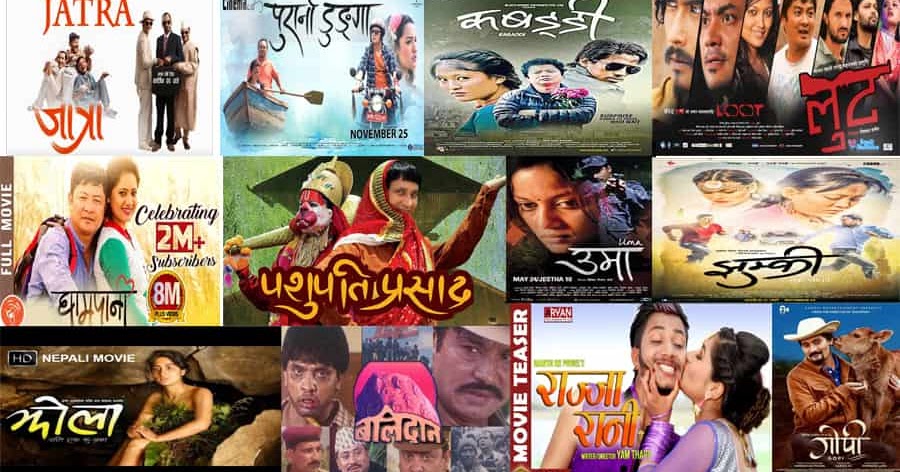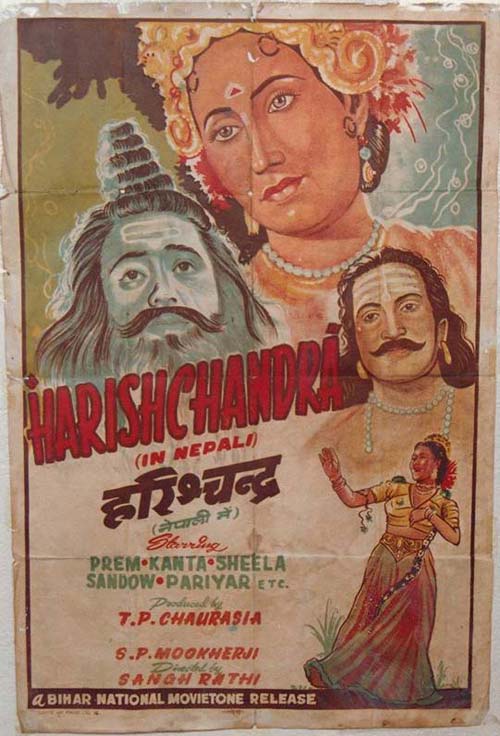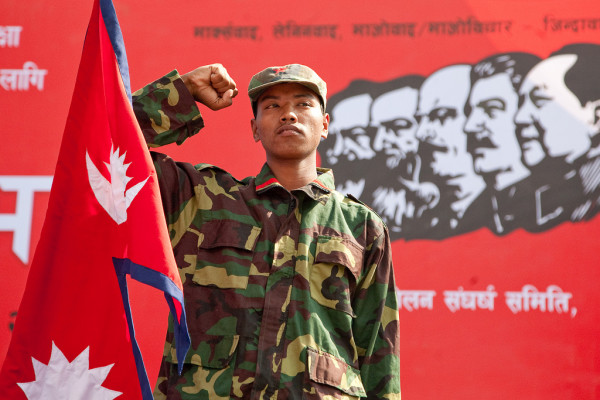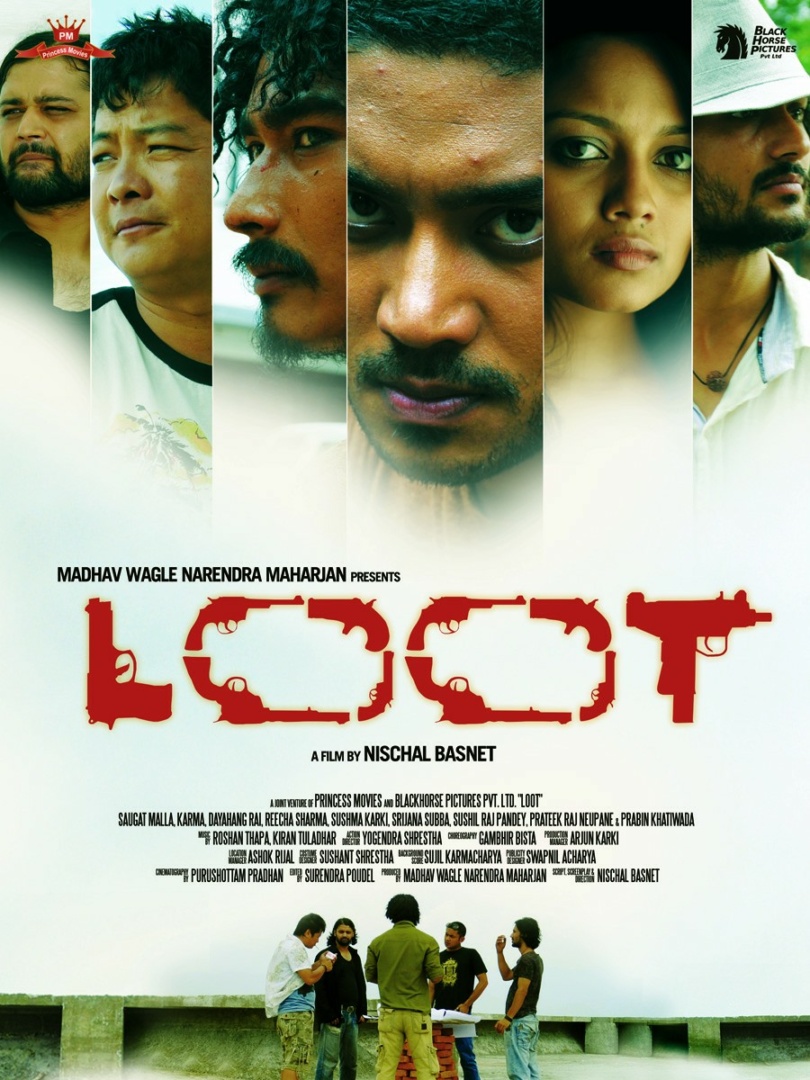The entertainment industry is huge and every year, hundreds of additional sections join the big puzzle. Since the industry has billions of followers, every country sets its resources to improve their corresponding entertainment sector. If we separate this vast industry into different nodes and examine it, the contribution of the movie or film industry is transparent as a crystal.
Nepal, as it seems, started its media journey some 70 years ago and has steadily morphed into something irreplaceable for its well-wishers. As a Nepali who grew up along the 90s stuff, I can clearly say that the Nepali Film Industry has seen its fair share of ups and downs.

Sure, it is not on par with Hollywood or our nearest neighbor Bollywood but, having something better right before our eyes means we always have something to learn and improve. Having said that, let’s delve deeper into this subject and explore some more the history of filming in Nepal.
Initial Years of Movie Making
Everything has its benchmark and that moment for us Nepalese cinema lovers traces back to 1951 with the release of the first Nepali language movie. The name of the movie was “Satya Harischandra” and its directorial credit goes to DB Pariyar. Since our country lacked the essential infrastructures and other requisites, the production took place in Kolkata, India.

This film sparked a fire for movie enthusiasts all over Nepal and gradually led to “Aama”; the first movie produced in Nepal in 1964. The movie is a classic and aired under the direction of Hira Singh Khatri.
The foundation stones had been laid and the Nepali movie industry had embarked on its long and weary path. The two initial films had been produced under the wingspan of His Majesty’s Government of Nepal (currently the Government of Nepal).
Breaking this barrier, the first privately bannered movie “Maitighar” made its way to Nepali hearts in 1966. It aired under the banner of Sumonanjali Films Pvt. Ltd. with Mala Sinha and CP Lohani as the lead cast.
The movie had a promising storyline and a ton of contributions from the Bollywood movie industry. Considering the Nepali movie industry was taking its baby steps, we were in no position to deny any sort of aid from an already firm Bollywood.
As such, we had amazing singers like Lata, Asha, and Usha Mangeshkar and playback support from Manna Dey enriching the music. Our national legends like Prem Dhoj Pradhan, Aruna Lama, Narayan Gopal, and CP Lohani also contributed to the movie with their musical talents. So, you can imagine the quality behind this movie’s music.
A New Era for Nepali Movies
Some 7 years later, the Nepali movie industry began its new venture. The Government of Nepal established a firm called the Royal Nepal Film Corporation. The corporation produced several great movies including “Mann ko Bandh” with Prakash Thapa as the director and Shiva Shankar/ Nati Kaji the pillars behind its music. The movie aired in 1973 and enjoyed a lot of positive appreciation from the audience.
A few years after the success of this movie, Nepali movie lovers got their first colour film. The name of the movie was “Kumari” and it premiered in 1977. This opened a whole new portal for the colour movie industry.
Following the huge success of Kumari, movies like Sindoor and Jeevan Rekha made their appearances. Looking back, this might have been a turning point in the history of filming in Nepal.
FIND SOME AMAZING CAMERAS ON DARAZ
The Hard Times for Nepali Film Industry
The political situation of a country has a lot of impact on its development and it’s something we all have experienced first-hand. The unexpected death of the Royal family, the new king getting overthrown and the rise of a new power had us all in dilemma.
Different aspects of the country underwent a revolution including the movie industry. The insurgency of the Maoists that started in 1996 somehow affected the Nepali movie industry and contributed to its temporary downfall.

While the war was going on behind the curtains, enjoying a movie as a luxury was out of the question for people in rural areas. This internal turmoil resulted in degrading the quality of films. It’s not that the actors and the actresses were not trying hard enough, but the overall budget and decrease in the audience took their toll.
Many films were on the verge of cancellation and many others were hesitant about releasing their materials. Many talented performers were forced to leave the country for securing their well-being as well as their career.
Recovery and Rise of the Industry
Like any other thing, jinxes have a time limit. The Nepali movie industry surely took some heavy blows but the long history behind us would never let us give up. The political disturbance slowly started sedimenting after Maoists seeped into mainstream politics in 2006.
Following the event, the film industry started rejuvenating and prospering. Moviemakers, producers, and the long-awaiting audience propelled the industry towards a speedy recovery.
In my honest opinion, the mainstream movie “Loot” changed the trajectory of Nepali movies. The movie hit the theatres in 2012 and amassed massive success.

Written and Directed by Nischal Basnet, the movie engrossed around NRS.52 million, a never-seen figure until that day. The movie revolved around youngsters and focused on the realistic aspects of modern life.
The success and the example “Loot” set became something that would bring a new wave of realistic movies in the days to come. Some of the commercially successful movies that followed this momentum are “Kabadi Kabadi”, “Kohinoor”, “Kalo Pothi”, and “Chakka Panja”. The success of these movies also helped in the rise of some very versatile actors and actresses who broke the chains of the traditional acting trend.
Also, many of us are unaware of the fact that several Hollywood and Bollywood movies have been shot in Nepal. We can’t blame them because our country’s diverse topography and natural beauty make it a great choice for filming.
Some of the Bollywood movies include famous names like “Hare Rama Hare Krishna”, “Mahaan”, “Yudh”, “Beqabu”, “Love in Nepal”, “Ek Haseena Ek Deewana”, and “Baby”. Similarly, Hollywood movies “The Golden Child”, “Baraka”, “Little Buddha”, “Seven Years in Tibet”, “The Fall”, “Everest” and many more have scenes in Nepali territory.
Conclusion
Well, we just took a short yet informative ride across the history of filming in Nepal. There are several details we could not mention as it would have taken a lot of time and we would not like to bore our readers to death. But, we did point out the major events and turning points.
Nepali movie industry is still far from reaching Hollywood and Bollywood standards but, we are slowly and steadily moving towards our goal. The younger generation needs to support their national film industry and I hope this article will help them understand the hardships of the industry and maybe give it a sincere chance.
ABOUT THE AUTHOR
Prabesh Niruola is a writer who has been venturing the realms of content writing for 5+ years. While he does not bind himself to a particular niche, his extensive research on the subject at hand and skillful ways to present the context helps him shine in this profession. Apart from professional writing, he also expands his horizons through poems. If you love expressing or reading poems, do follow him on his Commaful profile. The link is given below.
https://commaful.com/play/perfectslice/
Prabesh is also a heavy metal fan and indulges in constant pursuit of guitar mastery.

